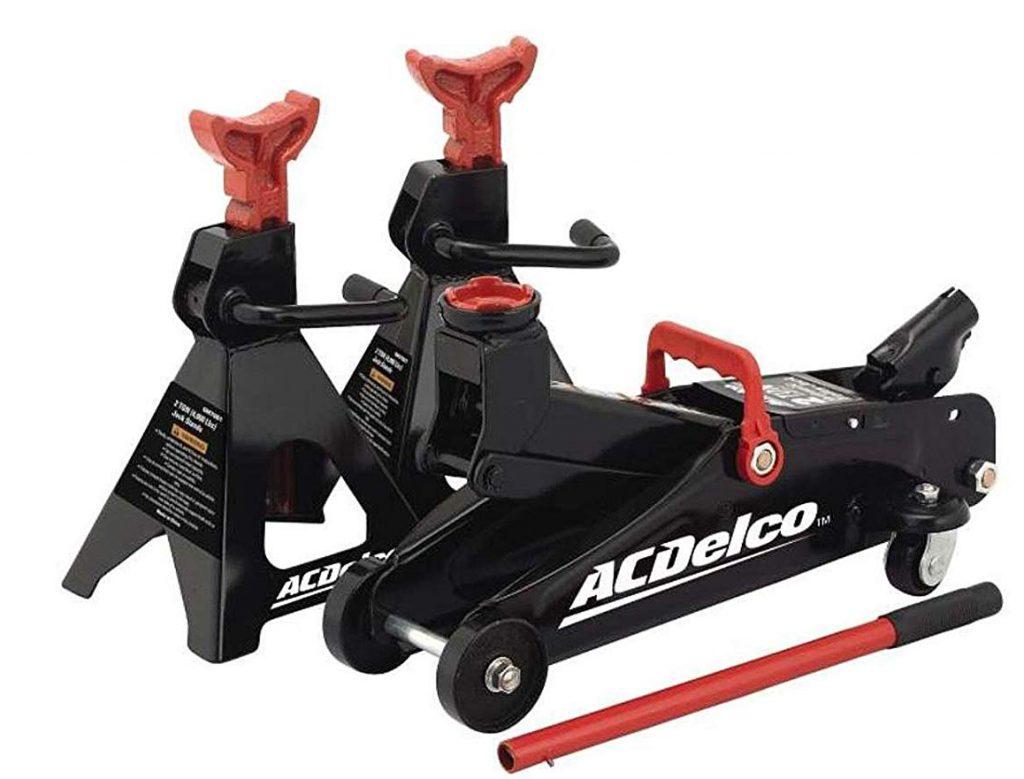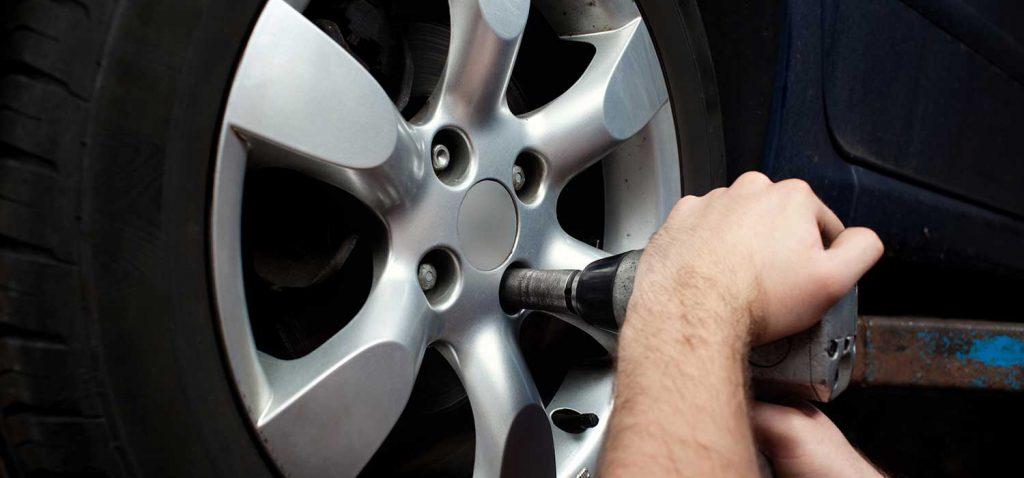The simplest trick to make your tires last much longer is proper tire rotation. How to do tire rotation, for best performance, is after each 3000-5000 miles. Furthermore, this strategy can be useful in saving a ton of your money as well, let’s say, for buying a set of tires sooner. In fact, you can save even more by doing it yourself when it’s time for the car to demand a tire rotation. Therefore, in this technical guideline, all you need is to understand the nature of tire wearing and learn the right techniques in doing so. Just prepare only these certain handy tools and you’re ready to go: floor jack, jack stands, and a 4-way lug wrench.
Contents
The Reason Behind Tire Rotation
Tire rotation, in a understandable definition to any non-native English speakers, is to remove all four tires of a car and install them to that car again, but in different positions, which are scientifically backed and carefully tested by mechanical experts.
The real reasons behind this is the difference in tire wearing patterns between tires. For example, front wheels will have faster wearing rate than rear wheels because 60% of car weight is put on the front suspensions, the right front wheel will wear down faster then the left front wheel since drivers have to turn left faster than turn right in countries like the US where they have to drive on the right side of the road. Vice versa, for drivers in left-side countries like UK, their cars got right front wheel wearing down much faster than left front one. Therefore, after thousands of miles, people all around the world end up with uneven tread wear in tires, in different ways.
By the changing the positions of your tires, you can equalize these natural wear patterns. Tire rotation can slow down the wearing rate of the wheel currently in fast-wearing positions by moving it to the less pressured position.
If you do this regularly, a smoother and safer ride will result from proper wheel rotation. Additionally, in the long run, you got four evenly wearing wheels and all four wheels will last much longer.
Frequency Of Tire Rotation
Every car owner’s manual is supposed to contain the proper tire rotation schedule. You had better consult it to see. Generally, manufacturers recommend “tire rotation how often” is every 5000 miles, but you can rotate your tires after 3000 miles if your car went off-road a lot, for example. A quick tip is that you rotate your tires at the same time you change oil for your car.
Tire-Rotating Preparation
1. Tools
- Car Jack: Car jack is a device for lifting (jacking up) cars and other heavy objects. Experts from Car From Japan would not recommend using the jack that comes along with your car. That thing is only suitable for lifting up for a short times to change a wheel quickly. You should go for a $100 hydraulic floor jack as the safe route. Still worth your safety and future maintenance tasks.
- Jack Stand: Jack stand is a stand whose height may be adjusted and which is used to support an automobile that has been raised by a jack. A decent set of jack stands cost for about $30. This helps resting your car when all wheels are removed.

Investment in quality jacks and stands is value to your money
2. Rotating Patterns
Before loosening the lug nuts, one need to know what pattern we’re going to use to rotate our tires. The type of tires will decide the pattern of rotations. There are 2 types of tires: directional tires and non-directional tires.
- Directional tires: They have a “one-way” tread pattern that are optimized for the direction the tires rotate on the car, so they’re specifically made for either the left or right side. Their grooves are angled to optimize handling in order to do a good job of channeling water out from under the tire on wet road surfaces, thus greatly improving wet traction and reducing hydroplaning. If you pay attention, you will see little arrows or triangles on the sidewall indicate which way the tire is supposed to turn. Refer to the table below to decide the rotating pattern:
| For cars with directional tires | ||||
| Original tire position | Left front wheel | Right front wheel | Left rear wheel | Right rear wheel |
| New position after rotation | Left rear wheel | Right rear wheel | Left front wheel | Right front wheel |
- Non-directional tires: They have wheels that have the tread pattern designed in such that they can be mounted on any wheel. In this case, you should know whether your car is rear-wheel drive or front-wheel drive. Refer to the two tables below to decide the rotating pattern:
| For rear-wheel drive cars with non-directional tires | ||||
| Original tire position | Left front wheel | Right front wheel | Left rear wheel | Right rear wheel |
| New position after rotation | Right rear wheel | Left rear wheel | Left front wheel | Right front wheel |
| For front-wheel drive cars with non-directional tires | ||||
| Original tire position | Left front wheel | Right front wheel | Left rear wheel | Right rear wheel |
| New position after rotation | Right front wheel | Left front wheel | Right front wheel | Left front wheel |
Easy steps within 20 minutes
1. Elevate And Place The Vehicle Properly
The very first priority to rotate tires is to park the vehicle at the ground level and apply the parking brake. Tough surfaces, like concrete or tarmac, are the best options for rotating tires. Eventually to lift the vehicle, use the 4-way lug wrench to smoothly release each lug nut.
Make sure the car is not in motion when you try this, otherwise, it will be dangerous. You can use the floor jack to lift up the whole vehicle front through factory jacking point. Jacking point can be easily found on the engine front. If it is still difficult to find the front jacking, going through the vehicle manual can help.

Tire rotation and alignment are closely linked with each other. For the best alignment, keep a jack stand at both sides of a vehicle at the front.
You can utilize the support ridge for jack stands, which are often distinguished by a tiny mark at a few inches to the rear of every front wheel. After the stands are set up perfectly, you can go for reiterating the process of lifting and supporting the back-end of the vehicle.
2. Go For Tire Rotation
As you have merely relaxed the lug nuts, these will slide off smoothly with the support of the vehicle. However, going through car manual is recommended for tricky aspects. Then you can clear most of your doubts regarding how to do tire rotation through the process. You can also double-check by comparing with the patterns above.
Refer to the above patterns, or else, as a tip, note that most of the tires do have the rotation pattern mentioned over the tire surface.
3. After The Tire Rotation Is Finished
After you have rotated the tires properly, screw the lug nuts merely as the car is in support. Remember, if is not tightened completely; the car might fall. You may utilize the floor jack to support vehicle, and can later remove the stands.

4. Fit The Lug Nuts
Afterward, stiffen the lug nuts completely through 4-way lug wrench, if the car is thoroughly lowered. You can tighten the lug nut up to any extent without stripping.
Altogether, DIY tire rotation is fine if you are well versed with the technicalities to deal with a car and absolutely confident about safety aspects. Even if you can’t do it yourself, at least you should note details of your tire rotation.
Final Wrap-up
If you read to this point, I believe you all learn helpful knowledge to your car. Now, after proper tire rotation, you can save yourself a whole lot of money and ensure your ride safely. Keep your record of the mileage and the rotating pattern of this time in a safe place and remember to use the piece of information for the next time. However, when it’s time to replace all your tires, do it, you cannot just rotating your car forever. Ask the professionals next time you take your car to the garage.



